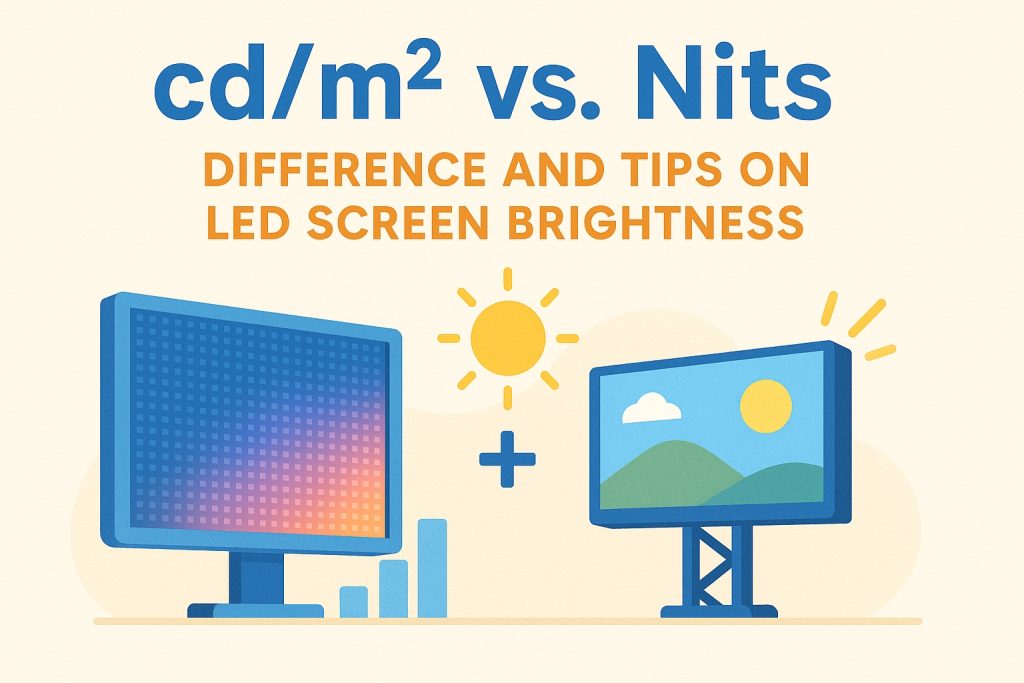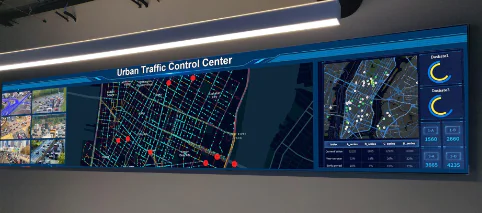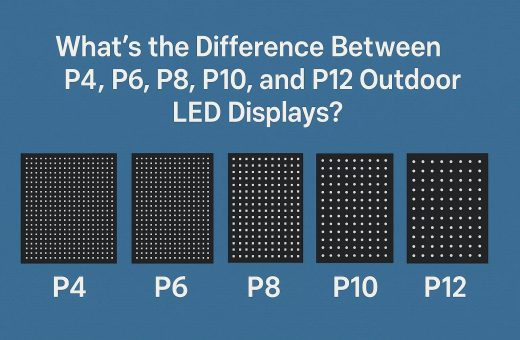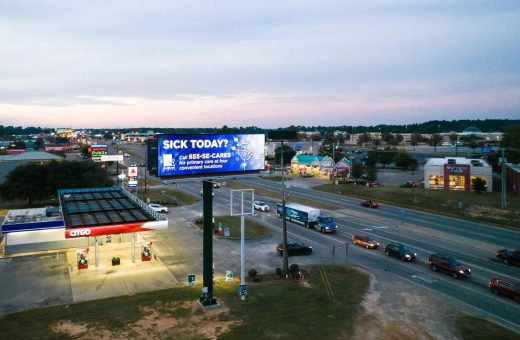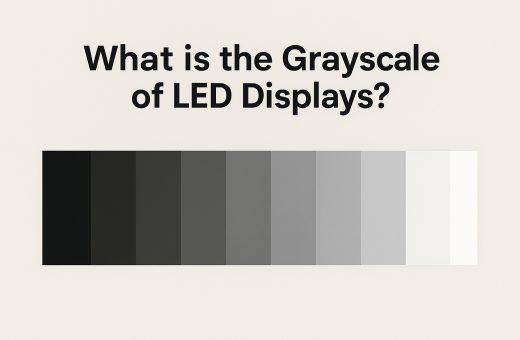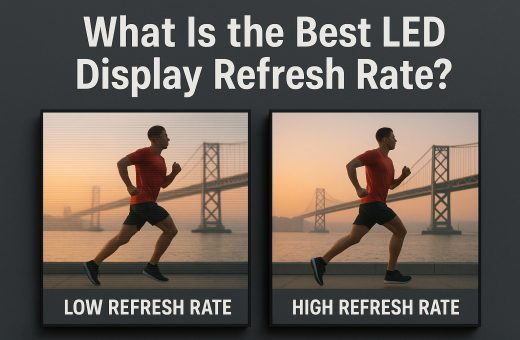Table of Contents
cd/m² and nits are two key units used to measure LED display brightness, which impacts how clearly the display content appears on screen under ambient environments. Without a proper understanding, you might risk selecting an LED display with inappropriate brightness, one that appears washed out under sunlight or overly harsh in a dimly lit room.
So, what exactly are cd/m² and nits? This article will provide a comprehensive guide to understanding cd/m² and nits, along with expert insights to help you choose the optimal brightness level for your specific application.
cd/m² vs. Nits: Definition and Conversion
First, let’s begin our cd/m² vs. nits guide by understanding each one by one.
1. What is cd/m²?
Candela is the standard unit of luminance in the International System of Units (SI), and candela per square meter (cd/m²) describes the amount of light a display emits over a specific surface area. One candela is roughly the intensity of light from a standard candle. The higher the cd/m² value, the brighter the screen.
2. What are Nits?
“Nit” is the more commonly used commercial term for cd/m². This means that the conversion factor from nits to cd/m² is 1, indicating that 1 nit is equal to 1 cd/m². The word “nit” comes from the Latin nitēre, meaning “to shine.” While not part of the official SI system, it has become a widely accepted term in product specifications, especially for LED, OLED, and LCD displays.
3. cd/m² vs. Nits: Any Difference?
Technically, there is no difference between cd/m² and nits in terms of numerical value. They both measure luminance. However, they differ in usage. Cd/m² is the formal SI unit used in technical documentation and engineering settings, whereas “nits” is the marketing-friendly term often found on spec sheets, product labels, and brochures.
Choosing the Right LED Screen Brightness
After understanding cd/m² vs. nits, how can you choose the right LED screen brightness? Here is an overall guide for typical indoor and outdoor display brightness.
1. Indoor LED Display Brightness
Indoor LED screens generally require lower brightness than outdoor screens due to controlled lighting and minimal direct sunlight. The recommended brightness varies by usage:
| Usage Scenario | Recommended Brightness (nits) |
| Conference rooms | 200–600 |
| Retail/shopping malls | 800–1,500 |
| Lobbies/atriums | 1,000–2,500 |
| Areas near windows | 2,000–3,000 |
- Conference rooms: A brightness of 200–600 nits is usually sufficient and more comfortable for meetings and presentations.
- Retail stores, malls, airports, and terminals: May require higher brightness (800–1,500 nits) to counteract ambient lighting and attract attention.
- Lobbies, atriums, or near windows: These brighter spaces benefit from higher brightness, around 2,000–3,000 nits, for optimal clarity.
2. Outdoor LED Display Brightness
Outdoor LED screens face challenges such as higher ambient brightness and longer viewing distances, which typically require higher screen brightness for screens to remain visible.
| Usage Scenario | Recommended Brightness (nits) |
| Shaded outdoor areas | 2,500–4,000 |
| Partial sunlight | 3,500–5,500 |
| Direct sunlight | 6,000–10,000 |
| Stadiums/billboards | 7,000–10,000 |
- Shaded areas: 2,500–4,000 nits are typically sufficient for covered areas such as outdoor malls or transit stops.
- Direct sunlight exposure: Screens exposed to intense sunlight (e.g., billboards, sports venues, roadside displays) generally require at least 6,000 and often up to 10,000 nits. Stadium-sized or highway-facing screens commonly use 7,000–10,000 nits.
- Variable lighting conditions: For environments with changing light throughout the day, it is recommended to test and calibrate brightness based on local conditions. You may also consult an experienced LED screen supplier, like Chainzone, for professional advice.
Why the Right LED Screen Brightness Matters?
1. Excessive LED Display Brightness Issues
- Eye Strain and Discomfort
LED displays that are too bright can create visual fatigue, especially in indoor settings or during nighttime use. Harsh lighting overwhelms the eyes, making it uncomfortable for people to engage with the content for more than a few seconds.
- Reduced Content Clarity
Excessive display brightness can cause glare and washed-out colors, which decrease the readability and visual quality of content displayed.
- Energy Waste and Higher Operational Costs
Running a screen at unnecessarily high brightness elevates power draw. Over time, this results in higher operational expenses and avoidable energy waste.
- Environmental and Safety Concerns
For outdoor displays, excessive brightness contributes to light pollution and hazardous glare. This can distract drivers and pedestrians, posing significant safety risks.
2. Insufficient LED Display Brightness Issues
- Diminished Impact and Engagement
A screen that is too dim fails to capture viewer attention, making it ineffective for marketing, announcements, or entertainment. Low brightness diminishes visual impact and lessens audience engagement.
- Brand or Message Misrepresentation
When displays render desaturated colors or low-contrast content, they risk misrepresenting brand aesthetics and messaging. This visual inaccuracy can erode brand reputation and diminish audience trust.
- Missed Communication Opportunities
In public spaces such as transport hubs, stadiums, or emergency zones, insufficient brightness can result in critical information being missed, posing safety and operational risks.
Chainzone Recommendation
Selecting optimal LED display brightness requires balancing multiple factors, including ambient lighting, location, content type, and viewer distance. With over 20 years in the LED display industry, Chainzone delivers smart LED display solutions for both outdoor and indoor applications.
For instance, we developed our proprietary Lens on Board (LOB) technology to address the common challenges of outdoor LED displays, such as poor visibility under sunlight and excessive energy use.
Our LOB smart displays can deliver up to 10,000 nits of brightness, making them ideal for high-ambient environments like highways, stadiums, and commercial billboards. Additionally, they achieve exceptional energy savings—up to 80% compared to conventional LED technology—through precision optical control that maximizes photon utilization while minimizing light spillage.
From retail environments to large-scale traffic systems, Chainzone is committed to providing LED display solutions that combine clarity, efficiency, and durability.
Wrapping Up
Understanding cd/m² vs. nits is essential when selecting an LED display that performs reliably in its intended environment. Brightness impacts everything from visibility and user comfort to energy efficiency and screen durability.
Choosing the right brightness level ensures better audience engagement and long-term value. For businesses seeking expert guidance, Chainzone offers expert advice backed by years of industry experience and global support. For more information, click here to contact us!

